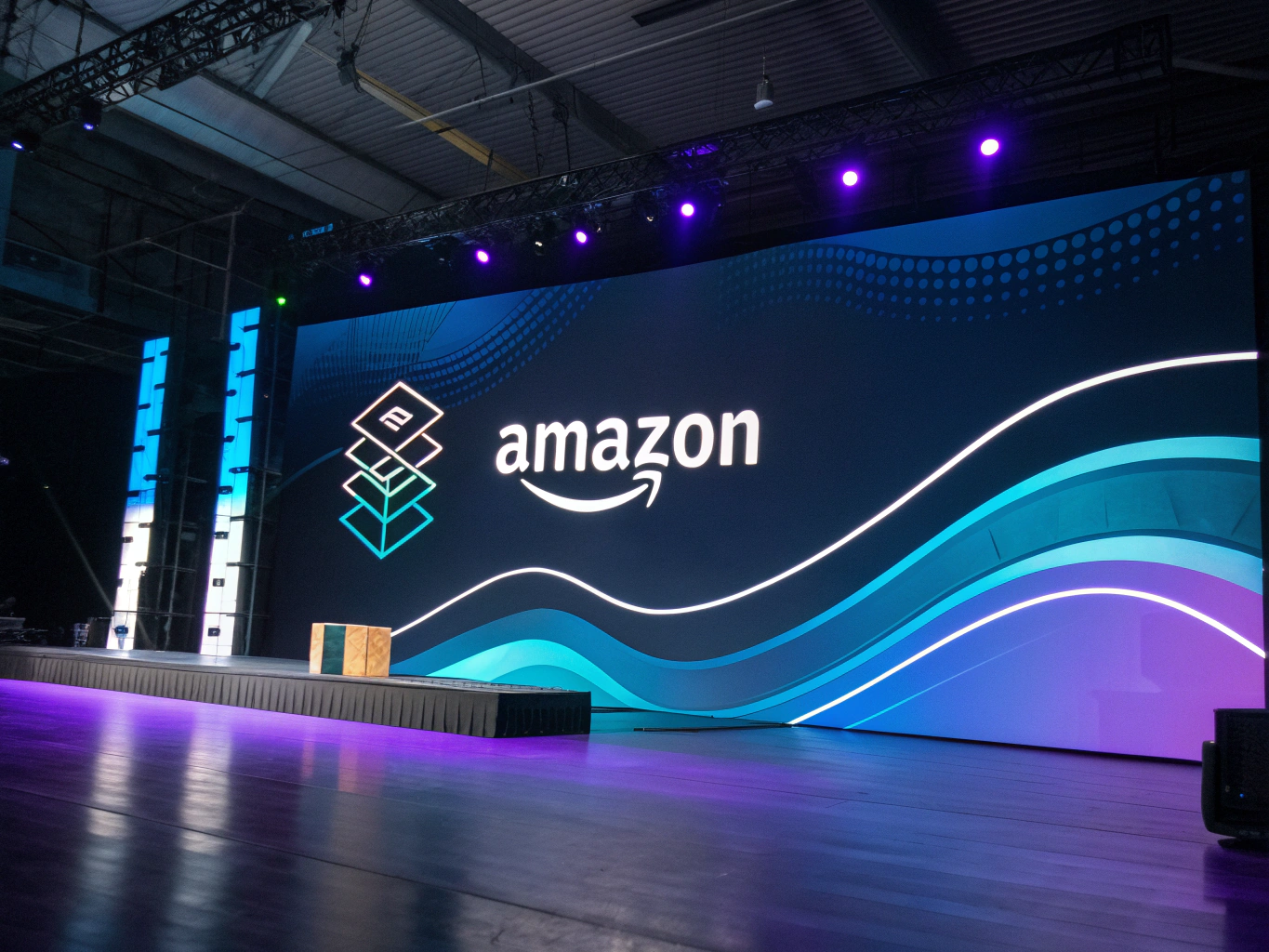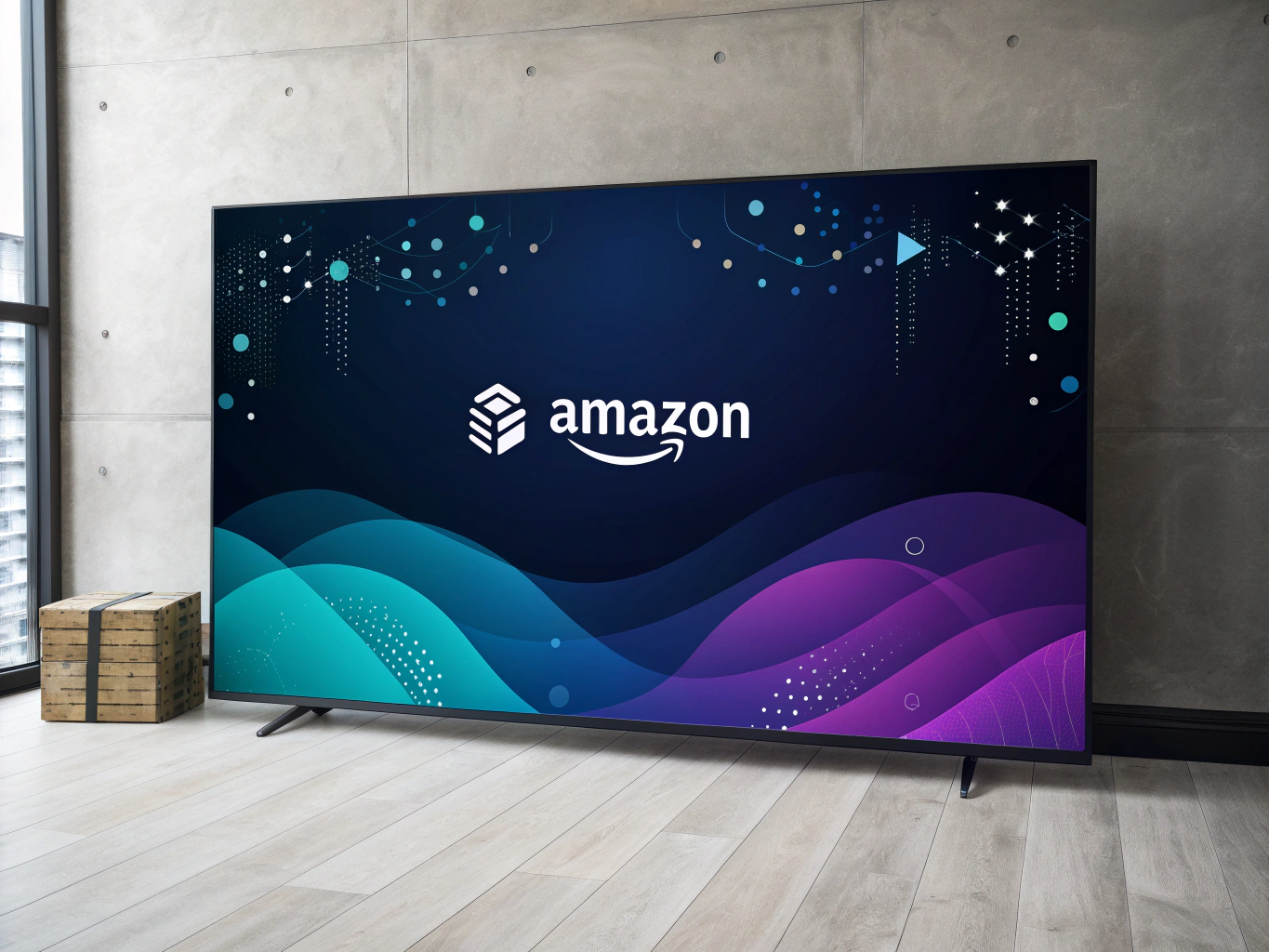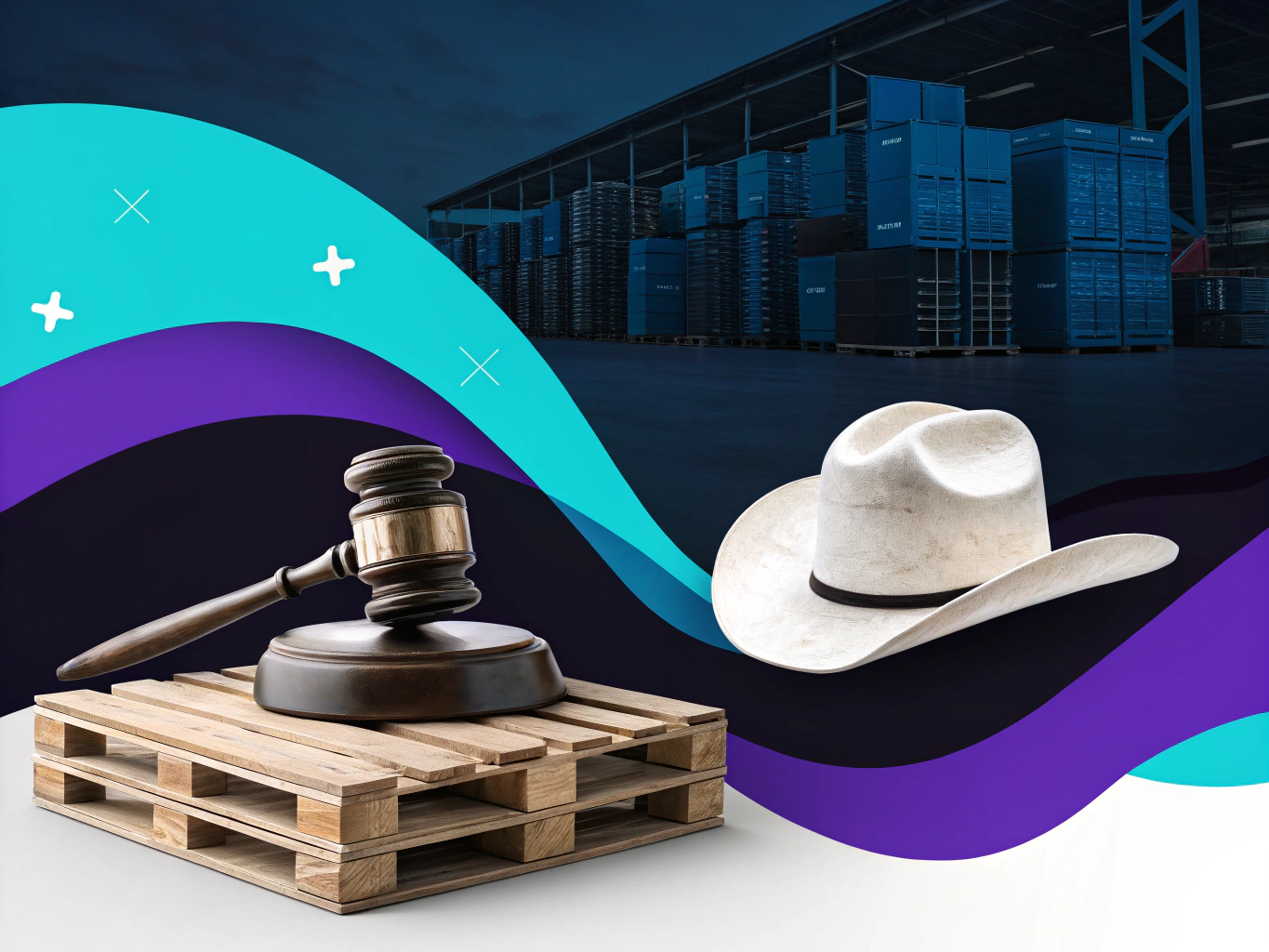Let’s be honest – we’ve all had that moment. You’re scrolling through TikTok at 2 AM, and suddenly you’re watching someone unbox an $85 Amazon return pallet that supposedly contains thousands of dollars worth of merchandise. The comments are filled with people claiming they’ve struck gold with these mystery boxes, while others swear it’s all a scam.
Here’s the thing: Amazon return pallets aren’t some get-rich-quick scheme, but they’re not a complete waste of money either. They exist in this fascinating grey area where opportunity meets chaos – kind of like that junk drawer in your kitchen that somehow contains both worthless receipts and that $20 bill you forgot about.
What Are Amazon Return Pallets (And Why Should You Care)?

Think of Amazon return pallets as the island of misfit toys from the retail world. These are literal pallets stacked with items that customers have returned to Amazon for various reasons – from “I ordered the wrong size” to “This isn’t what I expected” to “I just changed my mind.” Amazon, being the efficiency-obsessed machine it is, often finds it more cost-effective to sell these items in bulk rather than process them individually.
But here’s where it gets interesting: these aren’t just random boxes of junk. We’re talking about everything from high-end electronics to designer clothing, home goods to beauty products. In 2023 alone, Amazon processed returns worth over $816 billion. That’s not a typo – that’s billion with a B.
The Real Deal with Return Pallets
Before you start dreaming about scoring a pallet full of iPads for pennies on the dollar, let’s get real about what you’re actually buying. These pallets typically come in three categories:
- Manifest Pallets: These come with a detailed list of what’s included (the holy grail of return pallets)
- Blind/Mystery Pallets: The retail equivalent of a blind date – you don’t know what you’re getting until it arrives
- Category-Specific Pallets: Focused on particular types of items (electronics, clothing, home goods, etc.)
Where to Buy Amazon Return Pallets: The Official Channels
Let’s start with the most legitimate sources – straight from the horse’s mouth, so to speak. Amazon has two primary official channels for liquidation sales, and they’re probably not what you’re expecting.
Amazon’s B2B Liquidation Marketplace
This is the big leagues, folks. Amazon’s B2B marketplace isn’t your typical eBay-style platform. It’s more like the New York Stock Exchange of return pallets – complete with bidding wars and professional buyers who know exactly what they’re doing.
To get started, you’ll need:
- A registered business (sorry, casual treasure hunters)
- A reseller certificate
- Proof of business insurance
- A commercial address for delivery
Amazon Warehouse Deals Direct
Think of this as Amazon’s own outlet store. While it’s not exactly selling pallets, it’s worth mentioning because it’s often confused with the liquidation marketplace. Here, you can buy individual returned items that have been inspected and graded. It’s less risky than full pallets but also less profitable for reselling.
How to Buy Amazon Return Pallets: A Step-by-Step Guide
Amazon return pallets can be a great way to acquire products at discounted prices, whether for resale or personal use. However, navigating the process requires careful research and planning. Below is a step-by-step guide to help you purchase Amazon return pallets successfully.
1. Understand What Amazon Return Pallets Are
Amazon return pallets contain products that have been returned by customers for various reasons. These products are typically sold in bulk at a discounted price through an amazon liquidation store or third-party platforms. The contents of these pallets can range from brand-new to slightly used or even damaged items.
2. Choose a Reputable Seller
Before making a purchase, it is essential to research reputable sellers that offer amazon pallets for sale. Some common sources include:
- Amazon Return Warehouse – Amazon sells return pallets through its liquidation programs.
- Amazon Liquidation Store – Some physical and online stores specialize in selling amazon liquidation pallets.
- Third-Party Liquidation Websites – Platforms like B-Stock, Liquidation.com, and Direct Liquidation offer amazon wholesale pallets.
3. Verify the Legitimacy of the Seller
Not all amazon pallets are created equal, and some sellers may not be reliable. To ensure you are dealing with a legitimate source:
- Check customer reviews and ratings.
- Look for transparency in product descriptions and conditions.
- Avoid sellers that do not provide detailed manifests or have vague return policies.
4. Decide on the Type of Amazon Pallet to Purchase
There are different types of amazon return pallets, including:
- Amazon Mystery Pallet – A surprise assortment of items with unknown conditions.
- Manifested Pallets – These come with a detailed inventory list of included products.
- Unmanifested Pallets – These do not have an itemized list, making them riskier but potentially more profitable.
5. Compare Prices and Shipping Costs
Amazon pallets vary in price depending on the quality and type of items included. Consider:
- Base cost of the pallet
- Shipping fees (especially for large pallets)
- Any additional fees (handling, customs, etc.)
6. Place Your Order
Once you’ve chosen the right amazon returns for sale, follow the seller’s checkout process. Make sure to:
- Read the terms and conditions carefully.
- Confirm shipping details and estimated delivery time.
- Keep a record of your transaction for reference.
7. Inspect Your Pallet Upon Arrival
When your pallet arrives, inspect it thoroughly to determine the quality of the items. If purchasing for resale, sort the products based on condition and estimated resale value.
8. Resell or Utilize the Items
If you bought amazon return pallets for resale, consider using platforms like eBay, Facebook Marketplace, or local retail outlets to sell the items. Evaluate whether fixing or repackaging certain items can increase their resale value.
9. Assess Your Profitability
To determine whether amazon pallets are legit for business purposes, analyze your return on investment (ROI). Calculate the cost of purchase, repairs (if needed), and resale profits to see if it’s a viable business model.
Buying amazon return pallets can be a lucrative venture, but it requires careful research, patience, and an understanding of the risks involved. By following these steps, you can make informed decisions and maximize your chances of finding valuable items at a bargain price.
The Third-Party Liquidation Gold Rush

Now we’re getting into the wild west of Amazon returns. Third-party liquidators are like the prospectors of the digital age, and they come in all shapes and sizes. Some are legitimate businesses with years of experience, while others… well, let’s just say they’re about as reliable as a chocolate teapot.
Top Online Platforms for Return Pallets
After analyzing thousands of transactions and speaking with hundreds of buyers, here are the platforms that consistently deliver:
- BULQ: The most user-friendly platform with detailed manifests
- Liquidation.com: The largest selection but requires more due diligence
- DirectLiquidation.com: Often has exclusive deals with major retailers
- 888Lots: Specializes in smaller lots, good for beginners
Finding Liquidation Stores Near You
The digital world isn’t the only place to score Amazon returns. Physical liquidation stores are popping up faster than coffee shops in Seattle. These brick-and-mortar locations often buy truckloads of returns and sell them either by the pallet or piece.
To find legitimate liquidation stores near you:
- Check local business directories
- Search for “amazon liquidation stores near me” on Google Maps
- Join local reseller groups on Facebook
- Look for warehouse sales and auction events
The Math Behind the Madness
Here’s where we need to talk numbers, and I promise to make this as painless as possible. The average Amazon return pallet costs between $100 and $5,000, depending on the merchandise value and category. But the real question isn’t how much you’re spending – it’s how much you’re likely to make.
A typical return pallet might have a retail value of $5,000, but here’s the reality check: expect about 50-70% of items to be resellable at 50-60% of their original retail value. The rest might be damaged, missing parts, or simply unsellable.
Let’s break down a realistic scenario:
- Pallet Cost: $1,000
- Retail Value: $5,000
- Resellable Items: 60% ($3,000 worth)
- Average Resale Price: 55% of retail
- Potential Revenue: $1,650
- Gross Profit: $650 (before expenses)
Official Amazon Liquidation Channels: Your Gateway to Return Pallets

Let’s be real – navigating Amazon’s liquidation channels feels a bit like trying to decode the Matrix at first. There’s this whole ecosystem of B2B marketplaces, warehouse deals, and distribution networks that most folks don’t even know exists. But here’s the thing: understanding these official channels is crucial if you’re serious about buying Amazon return pallets.
Amazon’s B2B Liquidation Marketplace: The Inside Track
Think of Amazon’s B2B Liquidation Marketplace as the VIP room of return pallet buying. It’s where you can get your hands on pallets directly from the source, without playing telephone through multiple middlemen. But don’t expect to just waltz in – there are some hoops to jump through.
First up, you’ll need to register as a business buyer. This isn’t like setting up your Prime account – you’ll need legitimate business credentials, tax documentation, and sometimes even proof of your resale capabilities. The platform uses an auction-based system that honestly reminds me of eBay back in the day, except we’re talking pallets of merchandise instead of your neighbor’s vintage Star Wars collection.
The bidding process is straightforward but strategic. You’ll see listings with manifest details (though take these with a grain of salt – more on that later), estimated retail values, and condition grades. Starting bids can range anywhere from a few hundred to several thousand dollars, depending on the merchandise category and volume.
Shipping and Logistics: The Hidden Complexity
Here’s where things get interesting – and potentially expensive. Remember that scene in Raiders of the Lost Ark where they’re moving that massive crate? Well, moving liquidation pallets isn’t quite that dramatic, but it’s definitely more complex than getting your regular Amazon packages.
Most pallets require freight shipping, and unless you’ve got a loading dock at your house (which, let’s face it, most of us don’t), you’ll need to arrange for liftgate service. These additional services can add hundreds to your costs, sometimes even matching what you paid for the merchandise itself.
Amazon Warehouse Deals Direct: The Lesser-Known Option
Now, let me tell you about a path less traveled: Amazon Warehouse Deals Direct. It’s like finding a secret level in a video game – most people don’t even know it exists. This program is different from regular liquidation channels because it focuses on individual returned items rather than mixed pallets.
The qualification process is actually more stringent than the B2B marketplace. You’ll need to prove you can handle significant volume and have a track record in retail or ecommerce. The upside? The inventory tends to be more predictable, and you can often cherry-pick categories that align with your business model.
Geographic Availability and Market Access
Here’s something that might surprise you: Amazon’s liquidation programs aren’t available everywhere. They operate like a patchwork quilt across different regions, with availability often tied to the location of Amazon’s major distribution centers. Some areas have abundant access to return pallets, while others are practically deserts.
Third-Party Liquidation Platforms: The Wild West of Return Pallets

Let’s talk about the third-party marketplace landscape – it’s basically the Wild West of return pallet buying. You’ve got players like BULQ, Liquidation.com, DirectLiquidation.com, and others all vying for your attention (and wallet). Each platform has its own personality and quirks, kind of like different neighborhoods in a city.
Platform Deep Dive: The Major Players
BULQ has positioned itself as the premium option, with curated lots and detailed manifests. Their interface is slick, but you’ll pay for that polish – their prices tend to run higher than other platforms. Liquidation.com is more like the bargain hunter’s paradise – larger lots, more variable quality, but potentially better margins if you know what you’re doing.
DirectLiquidation.com specializes in direct relationships with retailers, while 888Lots focuses on smaller, more manageable lots for beginners. BlueLots is newer to the scene but making waves with their technology-driven approach to lot curation. BoxFox? They’re the scrappy underdog, often offering better deals but with less hand-holding.
Comparing Fees and Services: The Fine Print
Let’s get into the nitty-gritty of platform economics. Each marketplace has its own fee structure, and boy, do these fees add up. You’re looking at buyer’s premiums (usually 10-15%), processing fees, shipping costs, and sometimes storage fees if you can’t pick up your items quickly enough.
Physical Liquidation Locations: The Boots-on-Ground Approach
While online platforms get all the attention, don’t sleep on physical liquidation locations. Warehouse liquidation centers, local liquidation stores, and regional distribution centers often offer better deals simply because they have less overhead. Plus, you can actually see what you’re buying – novel concept, right?
I’ve seen some incredible deals at seasonal liquidation events, particularly after major shopping holidays. Black Friday returns? Those start hitting the liquidation market around February, and let me tell you, that’s when the real treasures appear.
Smart Buying Strategies: Don’t Let FOMO Drive Your Decisions
Success in the return pallet game isn’t about buying everything you can get your hands on – it’s about buying smart. Think of it like being a professional poker player: you need to know when to hold ’em and when to fold ’em.
Research and Due Diligence: Your Best Friends
Understanding manifests is crucial, but here’s a secret: they’re often about as accurate as weather forecasts. You need to develop a sixth sense for reading between the lines. What’s not listed can be just as important as what is.
When calculating potential profit margins, I always follow the 3x rule: your sale price should be at least three times your total cost (including shipping and fees) to build in enough buffer for surprises. And trust me, there will be surprises.
Risk Management: Because Things Will Go Wrong
Let’s talk about quality assessment. You’re buying blind to some degree, but there are ways to minimize risk. Look for lots with clear photos, detailed condition descriptions, and sellers who respond quickly to questions. Return policies? Most liquidation sales are final, but some platforms offer limited protection against significantly misrepresented merchandise.
Insurance is another consideration that many newcomers overlook. Freight insurance is essential, but you might also want to consider inventory insurance, especially if you’re storing significant value in merchandise.
Specialized Categories: Not All Pallets Are Created Equal

Different product categories come with their own unique challenges and opportunities. Electronics pallets, for instance, require specific knowledge and testing capabilities. But get this right, and you could be looking at some serious margins.
Electronics: The High-Risk, High-Reward Category
Testing requirements for electronics can be intense. You’ll need basic technical knowledge, testing equipment, and probably a good relationship with a repair service. Popular brands tend to hold value better, but they also attract more competition.
The resale channels for electronics are numerous but demanding. Buyers expect everything to work perfectly, and one bad review can tank your seller rating faster than you can say “factory reset.”
Home Goods and Furniture: The Logistics Challenge
Furniture and home goods present a different kind of challenge – they’re bulky, prone to damage, and expensive to ship. But here’s the thing: local markets for these items are often undersupplied, creating opportunities for those willing to solve the logistics puzzle.
Storage requirements can be substantial – you’ll need clean, dry space with good access. Climate control isn’t just a luxury for certain items; it’s essential for preventing mold and damage that can render inventory worthless.
Building Your Amazon Returns Empire
Time to get real about what it takes to turn this side hustle into a legitimate business. And no, it’s not just about buying where to buy Amazon return pallets and hoping for the best.
Operations and Logistics
Your warehouse isn’t just a space – it’s your command center. Start with at least 1,000 square feet if you’re serious about scaling. I’ve seen too many people try to run this from their garage, only to end up with what I call the “Storage Wars” syndrome – chaos, confusion, and lost inventory.
Implement an inventory management system from day one. Even if it’s just a spreadsheet (though I’d recommend something more robust like Sortly or Zoho Inventory), you need to track what comes in and what goes out. Trust me, your future self will thank you.
Marketing Your Finds
Here’s where most people drop the ball – they focus so much on where to buy Amazon return pallets that they forget about the selling part. You need a multi-channel approach:
- Local marketplace apps (OfferUp, Facebook Marketplace)
- eBay for specialty items
- Amazon FBA for new-in-box items
- Your own website for building a brand
Financial Planning and Growth
Let’s talk numbers – because at the end of the day, this is a business, not a treasure hunt.
Initial Investment Reality Check
The minimum viable operation typically requires about $10,000 to start properly. This isn’t just for buying amazon liquidation pallets – it breaks down roughly like this:
- Initial inventory (2-3 pallets): $3,000-$5,000
- Basic equipment (pallet jack, testing tools): $1,000
- Storage space deposit: $2,000
- Operating buffer: $2,000
Scaling Strategies That Actually Work
Growth in this business isn’t linear – it comes in waves. The key is to reinvest profits strategically. Start with one category you understand well, master it, then expand. I’ve seen too many people try to be everything to everyone and end up being nothing to anyone.
The Future of Amazon Returns
Let me put on my futurist hat for a moment (it looks great with my New York attitude). The amazon liquidation industry is evolving faster than AI can generate cat memes.
Emerging Trends
We’re seeing a shift toward more specialized liquidation channels. Amazon’s been experimenting with AI-powered sorting systems that could dramatically change what ends up in these pallets. The days of truly random mystery boxes might be numbered – and that’s probably a good thing for serious resellers.
Sustainability and Circular Economy
Here’s something that keeps getting more important: sustainability. The returns industry is accidentally becoming a major player in the circular economy. When you buy amazon return pallets, you’re not just making money – you’re participating in what might be one of the most practical forms of large-scale recycling.
Final Thoughts: Is This Business Right for You?
After diving deep into where to buy Amazon return pallets and how to build a business around them, here’s the unvarnished truth: this isn’t for everyone. It’s not a get-rich-quick scheme (those don’t exist, unless you’re selling get-rich-quick schemes).
Success in this business requires a unique combination of skills: part treasure hunter, part data analyst, part logistics manager, and part salesperson. You need to be comfortable with uncertainty while being methodical about your processes.
But if you’re willing to put in the work, start small, learn continuously, and scale thoughtfully, there’s still plenty of opportunity in the amazon liquidation store space. The key is to approach it like any other business – with planning, patience, and persistence.
Remember: every successful operation started with someone asking “where to buy amazon return pallets?” But the ones who succeeded were those who stuck around to ask the harder questions about building a sustainable business.
Now, if you’ll excuse me, I need to go check on a pallet of “slightly used” robot vacuum cleaners that just arrived. Who knows? Maybe one of them will achieve consciousness and help me write my next blog post.
👉👉 Create Photos, Videos & Optimized Content in minutes 👈👈
Related Articles:
- Amazon Influencer Program Eligibility Guide for 2024
- Amazon Creator Connections: Influencer Marketing Guide
- The Power of CHATGPT: How It Can Boost Your Amazon Marketing
- Amazon Print on Demand: A Beginner’s Guide to Success
Frequently Asked Questions
How can I buy Amazon return pallets?
You can buy Amazon return pallets through liquidation websites that partner with Amazon, such as Liquidation.com, B-Stock, and Direct Liquidation. These platforms hold auctions where you can bid on pallets of returned items. It’s important to research the seller’s reputation and read the manifest of the pallet, if available, to understand the contents before purchasing.
Are Amazon return pallets worth buying?
Amazon return pallets can be worth buying if you’re looking to resell items for profit or enjoy treasure hunting for bargains. However, the value can be hit or miss, as pallets may contain a mix of high-quality and damaged goods. It’s crucial to weigh the potential resale value against the cost of the pallet and factor in any shipping expenses.
What is an Amazon mystery pallet?
An Amazon mystery pallet is a bulk package of returned or overstock items from Amazon, sold without a detailed inventory of its contents. Buyers purchase these pallets with the understanding that the exact products and their conditions are unknown, adding an element of surprise and risk. This type of purchase can be appealing to those who enjoy the thrill of discovering unexpected items.
What are the requirements for Amazon pallet delivery?
The requirements for Amazon pallet delivery typically include having a commercial address and the ability to receive large freight shipments, as residential delivery may not be possible. You may also need equipment like a pallet jack or forklift to unload the pallet. It’s important to verify these requirements with the seller before making a purchase to ensure smooth delivery.
Does Amazon have a return store?
Amazon itself does not operate a dedicated return store, but returned and overstock items are often sold through third-party liquidation companies. These companies may have physical locations or online platforms where consumers can purchase Amazon return pallets. Some brick-and-mortar discount retailers also sell returned Amazon products individually.
About the Author
Vijay Jacob is the founder and chief contributing writer for ProductScope AI focused on storytelling in AI and tech. You can follow him on X and LinkedIn, and ProductScope AI on X and on LinkedIn.
We’re also building a powerful AI Studio for Brands & Creators to sell smarter and faster with AI. With PS Studio you can generate AI Images, AI Videos, Chat and Automate repeat writing with AI Agents that can produce content in your voice and tone all in one place. If you sell on Amazon you can even optimize your Amazon Product Listings or get unique customer insights with PS Optimize.
🎁 Limited time Bonus: I put together an exclusive welcome gift called the “Formula,” which includes all of my free checklists (from SEO to Image Design to content creation at scale), including the top AI agents, and ways to scale your brand & content strategy today. Sign up free to get 200 PS Studio credits on us, and as a bonus, you will receive the “formula” via email as a thank you for your time.

